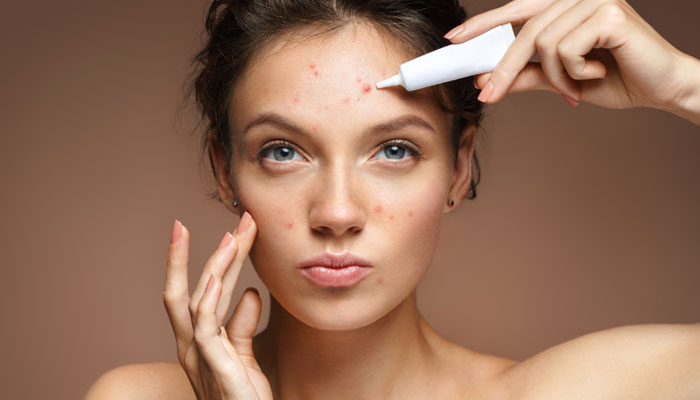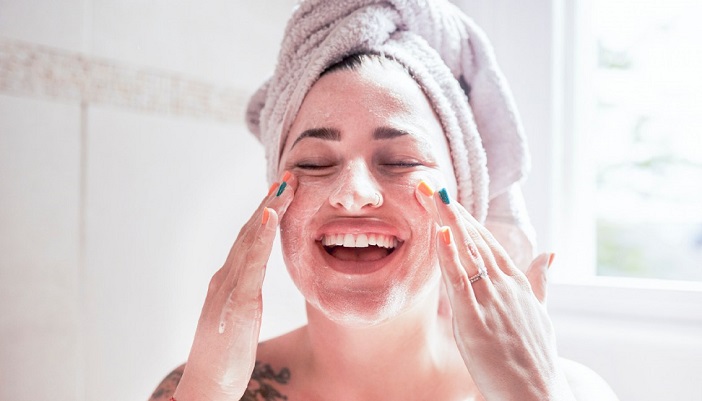Free radicals along with antioxidants are widely named nowadays, but do we really know what free radicals are? If we do not know much about its action and effects on our body; I invite you to know a little about them, in addition to the damage they can produce in accelerating the aging process and also causing various diseases.
Index
Where do free radicals come from?
Free radicals are a natural process that occurs in the body, but gradually and in small proportions, since they are vital for many of the metabolic interactions that occur between the body’s organs to take place.
For this reason, if they are necessary for the metabolism processes in the body, how can they affect us? To understand this we must know how free radicals are formed in our body. First of all, we must go to know a little about its formation process from cells to atoms.
Everything in our body is a system and is made up of endless cells, which in turn contain molecules and these molecules are what make up the atoms. Of course, these atoms are made up of neutrons (with no net charge), protons (positively charged), and electrons (negatively charged) that revolve around the atom.
Where electrons are responsible for joining other atoms to group together (called chemical bond) and form a stronger molecule. In these chemical bonds a type of bond can be caused where a single electron remains and that is where the famous free radical is produced .
Therefore, these free radicals are weak and immediately seek to associate with another electron by taking it into a molecule, thus leaving the molecule weak and due to its weakness it also becomes a free radical.
We suggest reading this article on Routine Care against Premature Aging of the skin and Definitive Treatments
It is here where these weak molecules go to other molecules to strengthen themselves and a reaction is triggered in the formation of free radicals, until they attack living cells that cause irreparable cell damage.
We can highlight that this action is carried out by the body itself naturally and in a small proportion, since they are regulated by the same body through the antioxidants found in the body, which we can achieve through a good diet.
It is also important to note that these antioxidants fulfill their regulatory action, since they are molecules that are responsible for blocking or preventing the loss (oxidation) of an electron and damage to the molecule.
How do you define free radicals?
It can be said that free radicals are produced according to functions in the body, either for the metabolic process and as an essential mechanism of the immune system, to fight bacteria such as viruses. But there are internal and external causes that produce an imbalance in our body, accelerating the action and formation of free radicals.
These free radicals can form and damage living cells, according to the disproportionate development of factors that stimulate it, which can be due to different factors such as: pollution in the environment, poor diet, smoking, among other factors that they influence and trigger the increase in free radicals.
Therefore, the body is designed to regulate the natural radicals it produces according to the activity required by the organs, but since there is an excess of free radicals in the body, the system cannot regulate it; for this reason, deterioration in the body originates.
Check in this article Retinoic Acid: Pros and Cons for Stretch Marks and Aging Skin
How to reduce the action of free radicals?
The action of fighting free radicals and their formation is in antioxidants, these are responsible for blocking the effects that free radicals cause in the body. Therefore, the more antioxidants the less damage caused by free radicals.
For this reason, a balanced and nutritious diet makes our body stronger in antioxidants and causes a balance between antioxidants and free radicals in our body, reducing a little the cellular damage they cause.
Foods rich in antioxidants are those that contain minerals such as selenium and zinc, as well as foods that are a source of vitamins C, vitamin E and Vitamin A obtained in the so-called beta-carotenes (group of foods with yellow, orange and red pigmentation); These strengthen growth and the immune system.
The antioxidants obtained through food are those that in the cellular system fulfill the function of inhibiting the attack of free radicals, giving one of the electrons that belong to it and stopping the chains generated by lack of an electron and finally stopping drastic cell damage.
It is important to note that the action and increase of free radicals can be reduced a little with the diet that one has, it must be balanced and rich in antioxidants. In addition, the factors to which we are exposed and the quality of life that we have influence.
Diseases associated with free radicals
The free radicals are the primary agents responsible for producing an aging in the body , therefore, less exposure to free radicals that cause damage to the body lower accelerating skin aging; which is a natural process but in some, it is faster than in others.
Regarding this, we recommend you read How to prevent premature aging?
In the same way, free radicals are attributed to stimulate and significantly increase bad cholesterol in the body, in addition to triggering a series of cardiovascular problems, where various functions of the cardiovascular system are compromised due to free radicals that trigger reactions in the body.
Likewise, free radicals are closely related to the chances that exist of activating cancer cells, especially cells that can cause cancer in the esophagus, cancer in the pharynx and cancer in the mouth; product of cell damage, affecting cell structures and affecting DNA.
Similarly, degenerative diseases are also associated with the action that free radicals can cause, such as: Alzheimer’s disease, Parkinson’s syndrome, Diabetes, Arteriosclerosis disease, etc.
Free radicals in aging skin
Free radicals are responsible for oxidation within the molecules that make up cells and transforming some of them into free radicals, which is why they are the main allies of the aging process as they damage many cells and deteriorate everything through chemical bonds. that is within your reach, such as cell membranes.
In this way, only what stops this action are the antioxidants that the body has, so through chemical bonds free radicals multiply, causing an imbalance of free radicals and the amount of antioxidants present . For this reason, healthy skin is affected by free radicals and these are directed towards collagen and towards elastin.
Learn more about All about Collagen!
That is why the skin looks wrinkled and irregular, due to the lack of firmness and elasticity due to the action of free radicals. In many people, according to external factors there are more free radicals that are not controlled by the body and produce what is premature aging, allergies, the appearance of spots on the skin and failure of the immune system.
How do free radicals work?
Free radicals are caused by different sources, one of them is by internal factors that cause dehydration of cells, excessive fatigue, stress, among other causes. The other is due to factors external to the body that damage cells such as poor diet , pollution, among others. Let’s take a look at external factors such as:
- The free radicals product of the radiation of the sun, this is one of the main causes that generate the radicals that affect the cellular aging of the skin.
- Another of the external factors that cause free radicals is due to the pollution of the environment and the smoke produced by cigarettes; that is why people who have this habit are doubly prone to the action of free radicals.
- Because of medical treatments for both the mildest and the strongest such as: furosemide, drugs such as paracetamol, antibiotics and chemotherapy treatments.
- The deficiency of antioxidants produced by hypercaloric foods, the intake of trans fatty acids, oils that are hydrogenated (margarine), diseases with constant inflammation and diseases such as diabetes are also a cause of free radicals .
Foods that help with free radicals
As we mentioned earlier, free radicals are fought through antioxidants , for that reason we must find which ones are richest in these molecules and help the body avoid oxidation, which is generated to other molecules due to free radicals. .
Find out more about this topic Antioxidants: Natural, Artificial, Benefits and Characteristics
- Antioxidant foods rich in vitamin A : This vitamin is good as an antioxidant, we find it in yellow, orange, and red vegetables, as well as in brightly colored vegetables such as lettuce, broccoli, parsley, spinach, pumpkins, carrots. And other foods such as mango, melon, egg, tuna, butter, etc.
- Antioxidant foods rich in vitamin C: especially citrus fruits, apples, kiwis, melons, bananas, peppers, spinach, tomatoes, among other foods.
- Antioxidant foods rich in vitamin E: it is found in the leaves of vegetables, in olive oils, soybean oils, brewer’s yeast, in egg yolks, and nuts, among others.
- Foods that contain Selenium and Zinc (antioxidant action): foods high in Zinc and Selenium, for example: organ meats, fish, meat, chicken, cereals, eggs, legumes, etc.
- Copper-containing foods: fish, shellfish, liver, green vegetables, and cereals.
- Flavonoids: these are considered secondary metabolites, mostly found in vegetables and fruits, as well as wines and green teas.
Cosmetics that help with free radicals:
The cosmetics industry is increasingly focused on skin rejuvenation, for this reason, its products are aimed at inhibiting free radicals through their antioxidant formulas . Cosmetic products mostly have these compounds:
- Tocopherol or vitamin E: we can say that it is the essential compound, since it is the best known antioxidant for being very stable; in addition, due to its high properties it serves as a healing and at the same time, as a moisturizer for the skin.
- Coenzyme Q10: this antioxidant acts specifically to act against free radicals that especially affect the cells that produce collagen, likewise Q10 is produced by the body itself and is responsible for the reproduction of vitamin E.
Discover more information about Vitamin E: Know its importance for health
- Retinol (vitamin A): its action is aimed at helping the skin to reduce the appearance of wrinkles, providing a skin with elasticity and acting effectively against free radicals, helping the skin to have a fresher appearance.
Composition of a free radical
To understand a little more about free radicals, it is necessary to see how it is formed, since it is made up of an oxygen atom that has only 7 electrons, normally they are made up of 8 electrons, being stable.
So the free radical, having one less electron, makes it unstable and seeks to take another by destabilizing and producing the chain of radicals. So this chain action of radicals is neutralized only with antioxidants that stop oxygen atoms .
Types of antioxidants that neutralize free radicals
We must know that there are two types of antioxidants that stop free radicals, these antioxidants depend on where they come from, since they vary depending on how it acts with the free radical if the antioxidant has a tendency or not, to disappear:
Endogenous antioxidant type
This type of antioxidant by neutralizing free radicals is not consumed, therefore, it gives it a greater power of action, since these in their composition are protein molecules (enzymes) that have antioxidant power and work together with minerals like iron, zinc, selenium, copper, and magnesium.
Exogenous antioxidant type
This type of antioxidant, by stopping free radicals, is consumed and therefore must be replaced , so it is based on the antioxidants that food gives and is separated according to where they act. Either in the membranes (lipid) where vitamin A, vitamin E, Q10, flavonoids or also at the aqueous level act, vitamin C intervenes here and in relation to metals.
Enter and read this important article Vitamin C: Discover everything it does for you !!!
Cancer relationship with free radicals
This relationship takes on more value every day, since there is a very narrow limit between free radicals and the different types of cancer, because antioxidants are highly reactive and cause a chain effect and thus produce a modification to the cellular structure. .
For this reason, the oxidation product of free radicals can reach the cellular structure of the nucleotides and in this way damaging the DNA and putting at risk and increasing the possibility of tumors appearing.
In the same way, the risks increase because free radicals attack the structures that are protein and this causes a large part of the proteins not to function properly in the body.
Therefore, studies continue regarding this issue but there is an increasing number of cases where weak organisms, low in antioxidants, are the most prone to free radicals taking control of the organism and causing cellular damage that can lead to the formation of tumors.
Kathie Sand always saw the world of beauty as the terrain on which to build her professional career, a goal that was clear to her when she was only 15 years old. Her great concern to expand knowledge led her to settle in Paris where she studied hand in hand with the best beauty professionals and with the most advanced techniques for skin care.



